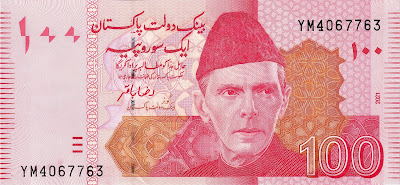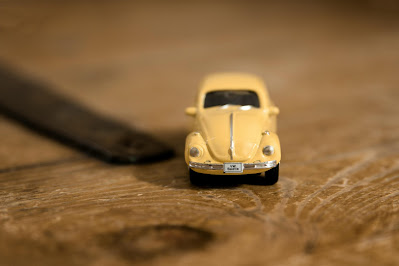martes, 9 de abril de 2024
REDISCOVERING NOSTALGIA: THE ENDURING ALLURE OF VINTAGE TOY COLLECTING
TRIBUTE TO AKIRA TORIYAMA (1955-2024)
With this Post we want to pay tribute to one of the greatest exponents of Japanese Anime, Akira Toriyama, his legacy and essence will be eternal as well as his masterful Dragon Ball saga, we all grew up and lived the experiences of Goku and his friends, and we still maintain those memories translated into collectible objects.
Dedicated to Akira Toriyama
1955-2024
この投稿で、私たちは日本アニメの偉大な推進者の一人である鳥山明に敬意を表したいと思います。彼の遺産と本質は、彼の傑作ドラゴンボール物語と同様に永遠であり、私たちは皆、悟空とその友達の経験を生きて成長しました。そして私たちはそれらの思い出を収集可能なオブジェクトに変えて今でも維持しています。
鳥山明に捧げます
1955-2024
ARE COLLECTIBLE TOYS STILL IN TREND?
In recent years, the collecting of vintage toys has increased even more, and we will not go into the economic reasons that are already palpable in many countries that seek to sustain themselves economically and make their home economies grow, or at least, have a decent livelihood. .
We will not say that vintage toy collecting is a way of life, a way of making a living like any job, but one thing can be agreed upon, you can make profits in this field, obviously having the necessary tools to know how to do it, but Collecting is more than economic, it is a lifestyle that undoubtedly attracts more people.
Today we see how toys made in the US, Japan and other nationalities have increased their value and demand, and this is due to many factors, mainly the fact that at the time they were limited editions, another aspect is the conservation of the toy and its condition. , which is almost always not optimal for buyers, although there are exceptions.
Toys from the Star Wars saga, others like Lego, G.I. Joe, board games from the MB brand, Hot Wheels, Pokemon and Dragon Ball, are the ones that undoubtedly today are in the first places in that collector environment in the world, gathering more followers every day who perfectly combine their fanaticism with this hobby.
If you own or inherited a lot of old toys, we advise you not to throw them away as many people usually do, save them and treasure them because you have no idea what great valuable treasure you have hidden among those old plastics, vintage toys are still the trend and we think that this will be for a long time, so let's continue hoarding those old toys.
HOW TO IDENTIFY AND AUTHENTICATE VALUABLE STAMPS
HOW TO START A STAMP COLLECTION EASILY?
Starting a stamp collection from scratch can be an exciting and rewarding experience. Here are some steps to get started:
1. Initial research: Spend some time researching the hobby of philately. Learn about the history of stamps, the different types of stamps, the most important issuing countries, and the topics that interest you.
2. Set your goals: Decide what type of collection you want to create. You can focus on a specific country, a certain time period, on topics such as nature, history, art, etc. Setting your goals will help you direct your search and keep your collection focused.
3. Obtain basic materials: Acquire the basic materials necessary to start your collection, such as stamp albums, protective sheets, tweezers (for handling stamps without damaging them), magnifying glasses, and stamp catalogs.
4. Get stamps: There are several ways to get stamps for your collection:
- Buy new stamps at your local post office or specialized philately stores.
- Look for used stamps on old letters, postcards, or lots of used stamps available at online marketplaces or philately stores.
- Exchange stamps with other collectors. You can find sharing groups online or in your local community.
5. Organize your collection: Classify your stamps according to the criteria you have previously established. Use your albums and protective sheets to organize them neatly and safely.
6. Learn and enjoy: As you build your collection, continue learning about the stamps you own. Investigate its history, its meaning and its value. Enjoy the process of discovery and learning that philately offers.
7. Connect with other collectors: Join local or online philately clubs, participate in discussion forums, attend stamp fairs and related events to meet other enthusiasts and share your passion for philately.
Stamp collecting is a hobby that can be as broad and diverse as you want, so don't be afraid to explore different areas and follow your personal interests. Enjoy the journey of building your stamp collection from scratch!
The Pakistani Rupee: Origin, Design, and Value Today
The Pakistani rupee (PKR) is the official currency of Pakistan, a country with a history marked by its independence from British rule and ...
.jpg)
-
Yugoslavia, a former federation of six republics in the Balkans, offers a rich tapestry of history and culture through its postage stamps. T...
-
Philately, the study and collection of postage stamps, opens a window to a country's history, culture, and art. Hungary, with its rich...
-
Identifying and authenticating antique stamps is a meticulous process that requires specialized knowledge and attention to detail. Here is...

.jpg)
.jpg)
.jpg)
.jpeg)
.jpeg)
.jpeg)
.jpeg)
.jpeg)
.jpeg)
.jpg)
.jpg)






.jpg)
.jpg)
